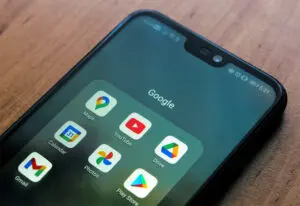
Make Sure Your Email Marketing Campaigns Don’t Go Unread
It’s 2019, and email has become an undeniable part of daily life. So much so, in fact, that some believe email may have helped fuel our cultural obsession with zombies. What do emails and zombies have in common? There are always more coming. Yancey Orr, a contributor to PopMatters, writes, “Teachers, lawyers, engineers, project managers, and other ‘knowledge workers’ begin their days with dozens of e-mails waiting for them, and go to bed knowing more will follow.” According to Return Path, the average consumer receives as many as 500 emails from email marketing campaigns each month and opens only 1 in 15.
In the digital marketing era, brands are not only competing for their customers’ money, but also for their time and attention. With the social media boom, shift from desktop to mobile, and more effective email filters, many have declared the death of email marketing campaigns. According to a recent McKinsey study, these declarations are a little premature. 91% of all US consumers check their email daily. And when it comes to acquiring customers, email is 40 times more effective than Facebook and Twitter combined.
Email marketing isn’t dead (or even undead!), just evolving. And it still has obvious benefits. First and foremost, if you’re growing your email list ethically, your database is full of individuals who already believe in you and your service or product. Email gives you the unique opportunity to communicate directly with this fanbase and build a meaningful relationship. By showing that you understand your consumers’ particular wants and needs, you’re laying the foundation for customer loyalty and better brand awareness.
The following tips from Forbes, Hubspot, and our decades of digital marketing experience are designed to keep your database away from the Unsubscribe button while optimizing your email marketing campaigns.
Remember that there’s a human being on the other side of your screen (and they’re probably busy).
Email deliverability experts at Return Path have found that most people decide within a fraction of a second whether they will open, ignore, or delete an email. That means your subject lines need to be supercharged. It also means your content should be accessible. And that your call-to-action should be easy to identify quickly.
According to Forbes, your email campaign should follow journalism’s inverted pyramid style. The most important information comes first, while everything else supports it. “They want the big news first because they’re often reading your email while they’re commuting or at work.” Karina Tama-Rutigliano writes, “If they want the details, they’ll read the email again just before they buy.”
Be open to innovation
How and why users access email is constantly shifting. From the one-size-fits-all model of email marketing campaigns past to the data-driven hyper-personalization strategies emerging in 2019, it’s clear that email marketing has and will continue to evolve. Interactive email was predicted to be the biggest design trend of 2018. Forbes predicts that the role of video and interactivity will only continue to grow.
Why email interactivity? It reduces barriers to engagement. Features like image galleries, add-to-cart-functions, quizzes, and reviews let users interact with brands, without ever leaving their inbox. According to Litmus, big brands like LEGO, UnderArmour, and Neiman Marcus have already started tapping into the power of these “mailable microsites,” and two-thirds of brands that have created interactive emails have plans in place to create more.
Not sure you’re ready to take on the technical challenges of interactivity? It’s not the only way to be innovative with your email marketing campaigns. Something as simple as personalized messages from the CEO, or data-driven promotional offers can improve your email performance. Remember, it’s all about appealing to your user’s particular needs.
Strategize, strategize, strategize!
Email marketing without a strategy is about as effective as throwing a handful of fliers in the air and hoping they reach your intended audience. Each email should have a specific purpose. It should have a measurable outcome. Before you ever hit the Send button. Are you trying to get users to click through to your website? Sell a specific product or service? Recruit more subscribers? Success is impossible if you don’t know what you’re trying to achieve.
Every email should also be treated as a chance to learn more about your consumers. How, when, and where are subscribers interacting with your emails? Are certain keywords more successful than others?
One way to hone your strategy is to test different approaches on your audience and measure the results. Which word is more effective, “free” or “complimentary”? Does your audience prefer short, snappy subject lines, or longer lines with more information? Antoine Bonicalzi, Director of Marketing for Cyberimpact writes, “As with all integrated marketing campaign initiatives, you might not get it right 100% of the time, but you should take the lessons learned and apply them quickly.” By measuring results and applying that data to future campaigns, you’ll be better able to create a successful user experience.
Remember that re-engagement is part of the process
Whether through reduced engagement, bounced emails, or users hitting the unsubscribe button, most marketers lose 25% of their email list each year. To help retain subscribers and boost interaction, re-engagement should be built into your email campaign strategy. One strategy includes showing subscribers how you’ve recently improved your product or service. Also, allowing users to choose what type of email content they prefer to see. Or even offering users a special promotion or gift. Sometimes, it’s as simple as asking your users if they’d like to continue receiving your emails. Even if they say no, you’ll potentially gain insight into why they’re no longer engaged. So this data you can apply to future email marketing campaigns.
Email Marketing Campaigns Will Continue to Evolve
As email marketing trends continue to adapt to modern technologies and lifestyles, experts predict innovation, personalization, and strategy will continue to be the keys to success. At the heart of every interaction, there needs to be a genuine connection between marketers and audiences. “Whatever you do in 2019,” Bonicalzi warns, “don’t forget that there’s another person who is on the receiving end of your emails. After all, focusing on making a genuine human connection is the foundation of any great marketing campaign.” And email marketing campaigns are not excluded.
Recent Posts
Custom Website Design and Development vs. Off-the-Shelf: What’s Right for Your Business?
Having a website that represents your brand and serves your business effectively can make or break your success in 2025. This poses the important question: Should you opt for custom […]
Read MoreHow to Rebrand Your Instagram for Better Engagement and Brand Recognition
Your Instagram presence can act as a beacon for brand recognition and customer engagement. It’s about painting a picture so compelling that your audience cannot help but be drawn to […]
Read MoreFrom Clicks to Conversions: The Science of High-Performing Digital Ads
The journey from interest to purchase is often paved with digital advertisements. However, not all digital ads are crafted equally. While some fade into the background, others command attention and […]
Read MoreBrand Consistency Examples That Will Make You Rethink Your Marketing Strategy
A consistent and strategic brand identity across all platforms is not just beneficial; it’s essential. By exploring real-world brand consistency examples, we uncover the immense power of maintaining a coherent […]
Read More3 Ways to Transform Blogs With SEO and Make Google Love Your Content
As marketers and business owners, our goal is to ensure the blogs we publish confidently stride into the spotlight of Google’s top search results. Achieving this requires great content, but […]
Read More



